After the operation, a scar may remain on the patient’s body - a patch of connective tissue. Experts identify many methods for eliminating unpleasant scars on the skin. All methods will differ depending on the type of post-operative damage and its extent. Most often, patients are interested in how to remove a scar after laparoscopy.
Scar healing time
The sutures are removed by the doctor several days or weeks after the operation. Modern clinics, when suturing a patient’s body, use self-absorbing threads, the tails of which fall off on their own after 7 days after the main material has been absorbed. Full rehabilitation occurs within 30 days after surgery.
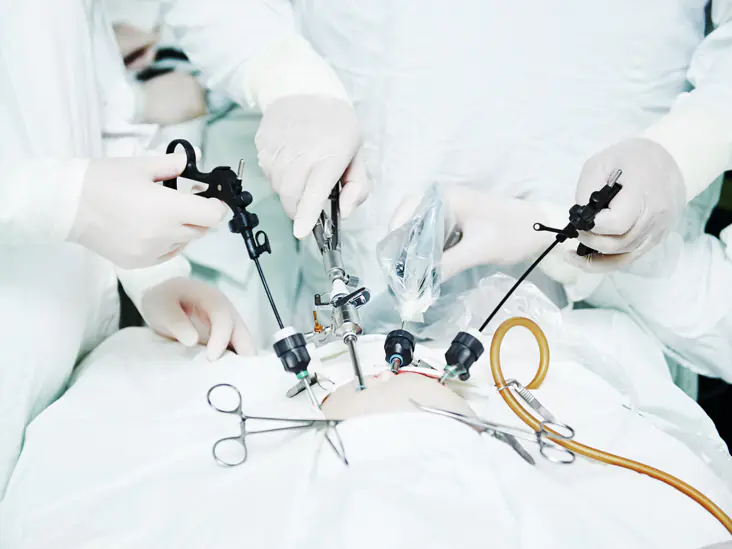
What stitches are there after laparoscopy? Scars after the procedure may completely disappear after a couple of months, and traces of them will fade with the first tan. When carrying a child, such scars can become brightly colored. Stretch marks may also form near the stitches.
When healing is normal
Scars after laparoscopy provoke many symptoms that can negatively affect the patient's condition. The main signs of suture healing and skin restoration include the following symptoms:
- aching pain in the affected area;
- slight discharge of pus;
- wound formation and skin moisture;
- bloating, as well as pain in the lower abdomen.
All described symptoms should subside 7-14 days after surgery. The seal under the seam should completely go away after some time. Redness may appear as a result of an allergic reaction to the medical patch used and other medications. Scars can also be itchy, which indicates active tissue repair - this is considered completely normal. In this way, damaged areas of skin grow new flesh.
Going to the doctor
The patient must necessarily go to see a doctor in the following cases:
- The stitches take too long to heal. This can be caused by poor regeneration and the body’s rejection of the applied threads.
- Severe itching and burning. The main reason for this process is irritation, infection or contamination of the wound, an allergic reaction to the patch and medications.
- The wounds became inflamed and became larger. Most often, this happens when the sutures are removed incorrectly by the doctor and due to poor care.
- The seal has increased in size. This indicates the accumulation of a large amount of pus.
- Hard lumps have arisen - separation of sutures or accumulation of purulent discharge.
- The scars do not heal for a long time, they begin to hurt, and blood comes out of them. This is the result of the seams coming apart.
- The rumen is very wet, and a brown or gray liquid comes out of it. This process occurs when the threads do not dissolve, which leads to internal rot.
- The scar continues not to resolve even after 7 days after the stitches are removed. This may indicate the onset of severe inflammation.
In some cases, which happens extremely rarely, the patient has to undergo laparoscopy again. It is important to remember that if you experience pain in the umbilical suture, you should not worry, as scars in this area heal longer and more painfully.

Reasons for long recovery
If scars after laparoscopy take too long to heal and cause discomfort to the patient, then it is important to determine the cause of this deviation.
A slow recovery process may occur in the following cases:
- Reduced immunity. In this case, tissue regeneration deteriorates, which provokes prolonged wound healing.
- Chronic diseases of the endocrine system, as well as problems with the production of hormones.
- Not following the doctor's recommendations for postoperative nutrition. Eating puts stress on your abdominal muscles.
- Obesity or physical fitness problems. Due to the large fat layer, it is difficult for the tissues to carry out the required regeneration for complete restoration of the sutures.
- Elderly patient. The functions of muscle tissue in this case are greatly weakened.
- Lack of fluid in the body. When dehydrated, muscle tissue is not saturated with oxygen, which also leads to problems with regenerative function.
In all the described cases, the process of patient recovery and scar healing can occur simultaneously with severe but tolerable pain.
Proper wound care
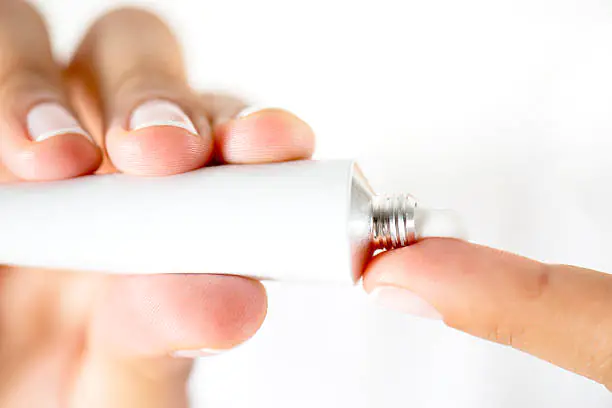
If the specialist did not properly treat the edges after stitching the wound, then when repeating the procedure at home, the patient will see traces of pus on the gauze bandage. Such suppuration provokes the appearance of visible scars.
To avoid unpleasant scars, it is important to carefully monitor the condition of the seams and properly disinfect them. To do this, you need to perform the following procedures:
- Treat the edges of the sore spot (excluding the damage itself) with alcohol-containing products.
- It is recommended to disinfect seams with antiseptics or simple hydrogen peroxide.
- Change the gauze every day and apply a new one, pre-treating it with syntomycin ointment. Such procedures must be carried out until the scars are completely healed.
- A special patch is applied to the problem area.
- It is prohibited to wet or treat the damage with water; it is also not recommended to use Levomekol ointment. The active components in the product lead to severe scarring, due to which a large and pronounced scar may remain on the body.
With proper care of postoperative scars and following all recommendations of the attending physician and surgeon, all scars after the procedure will completely disappear within a certain period of time.
Effective healing products
How to reduce scars after laparoscopy? After the stitches are removed, gauze soaked in special ointments and creams is regularly applied to the damaged area, which help quickly restore tissue, improve the condition of the skin and make the stitches smaller. The most popular remedy is the drug "Curiosin", which contains the active ingredient - zinc hyaluronate. Its deficiency leads to the appearance of pronounced scars.
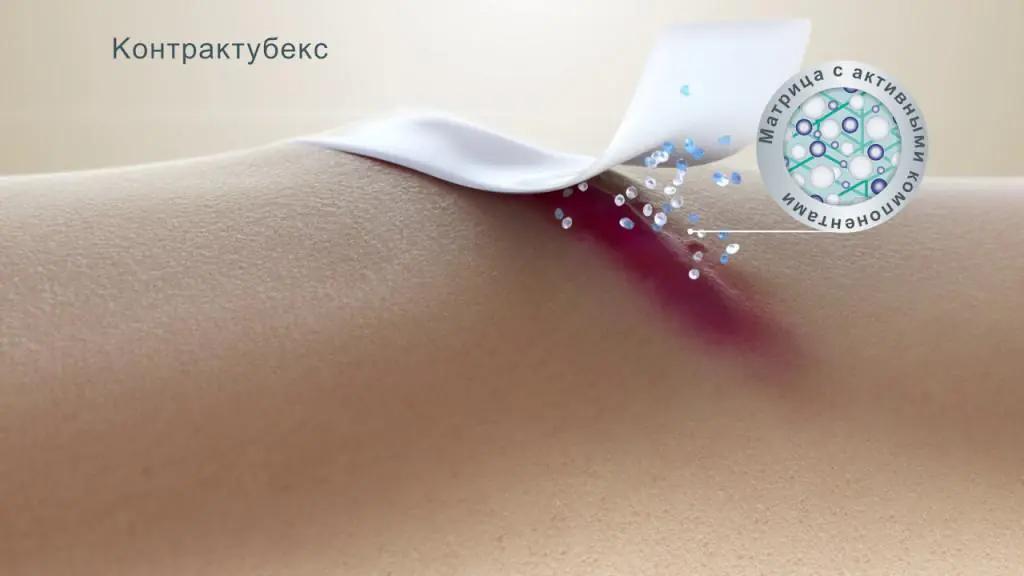
After some time has passed after the operation and the scars stop hurting a lot, experts recommend applying the Contractubex patch to the scars. This product helps soften scars on the skin, speed up the process of growing new tissue and cell formation. The Contractubex patch is distinguished by its mild effect and antibacterial effect.
Gels and ointments
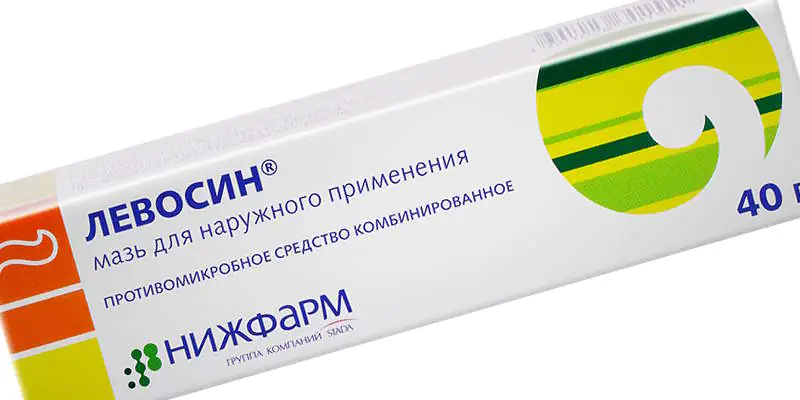
To quickly heal scars, it is recommended to use the following products:
- "Levosin" is a budget anti-inflammatory ointment with an antibacterial effect. The product is used externally. Helps speed up the process of tissue regeneration, has an anesthetic and antibacterial effect. The ointment is applied to gauze, and then applied to the area of skin treated with hydrogen peroxide.
- "Mederma" is a product that is a gel for eliminating scars for up to a year. This drug cannot cope with old scars on the skin; for this you should use cosmetic devices and a laser. Due to the special components in the composition, the gel helps soften the skin and make it smoother. The ointment can be applied to scars on the face, neck, and abdomen. The product is sold in a pharmacy and does not require a prescription from a doctor.
- "Dermatix" is a silicone-based gel that helps moisturize the skin, improve the appearance of scars, and smooth out damaged areas. This product also eliminates discomfort in sore areas, relieves itching, and improves skin pigmentation. Most often, the drug is prescribed for the care of hypertrophic and keloid scars.
Means "Kontraktubeks"
"Contractubex" for scars and scars has a large number of indications for use. The drug has a corresponding effect for each scar. Doctors recommend using the product if you have:
- scars after burns, amputations;
- keloid or hypertrophic scars after injury;
- scars after laparoscopy.
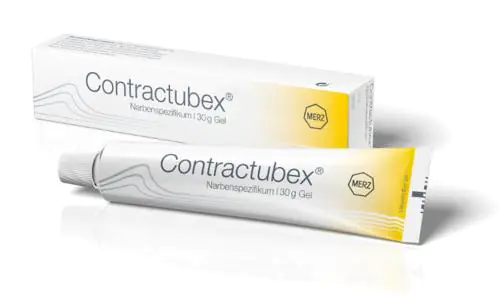
The drug can be used to eliminate stretch marks during pregnancy or after birth, as well as for ankylosis. This remedy has no special contraindications or restrictions for use.
Prohibited use:
- should not be used by patients who are allergic to the components of the product;
- limit use if the patient has increased sensitivity to parabens.
Preventive actions
After laparoscopy, doctors strictly prohibit:
- Load the body physically. You should maintain a quiet lifestyle for several months.
- Water ingress. To prevent wound infection and bacteria, do not shower for the first 2 weeks after surgery.
- It is forbidden to stay in the sun for a long time or go to baths or saunas.
- You should abstain from sexual intercourse for 2-4 weeks after surgery to prevent possible suture dehiscence.
- It is forbidden to consume poorly digestible foods. It is important to completely avoid carbonated drinks and alcohol.
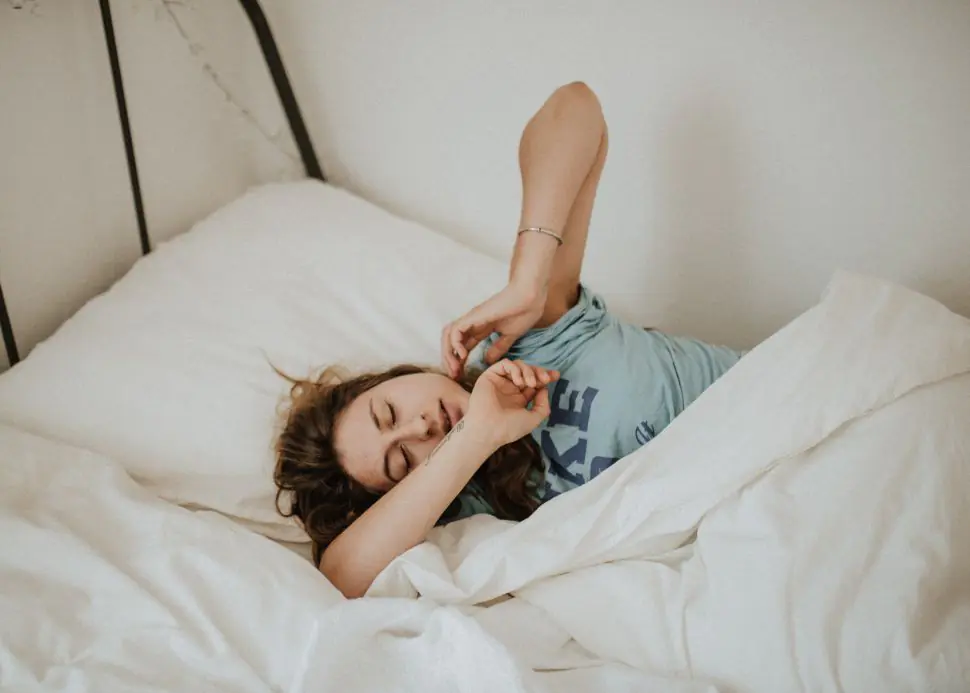
Following all the rules and advice of the surgeon will help avoid possible complications. Laparoscopy is a simple operation that does not lead to any complications.
Scars after laparoscopy are the consequences of surgery, which disappear with the correct surgical technique and subsequent care. Examination of the patient's internal organs or performing surgery on them is possible through small holes. This method of surgical intervention is called laparoscopy. Three or four holes are made, 0.5-1.5 cm in size, the integrity of the abdominal wall remains unchanged (unlike abdominal surgery).

What is laparoscopy and its features
The priority of this type of surgical intervention is a low degree of trauma, which leads to the following favorable factors:
- a few hours after the operation the patient can get up;
- minimal pain during and after surgery;
- complications are rare;
- no scars visible.
The operation is performed by a surgeon in a medical facility. The examination of internal organs takes place using a telescopic tube equipped with a digital video camera - a laparoscope. The instrument has halogen or xenon lighting and is also synchronized with the monitor.
The operation is prescribed in the following situations:
- infertility;
- endometriosis;
- ectopic pregnancy;
- benign tumor of the uterus (leiomyoma);
- fibroma;
- adhesions in the intestines;
- appendicitis;
- for restoration of fallopian tubes;
- ovarian cyst;
- removal of gallstones.
Laparoscopy is a highly effective and safe method of surgical intervention on the pelvic and abdominal organs.
The likelihood of scars after surgery
Whether marks will remain on the body after laparoscopy depends on several indicators. The first factor includes the growth of new connective tissue in areas of wounded skin. When connective tissue is formed in excess, hypertrophic or rough, raised keloid scars are formed.
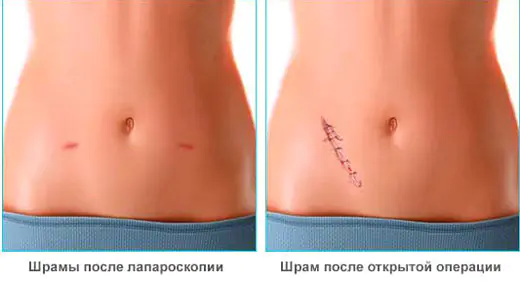
If the amount of connective tissue produced is insufficient, atrophic scars appear. Their second name is sunken scars, since during healing the sutures flow into the internal cavity of the peritoneum. The photo shows the difference between raised and sunken scars.
To minimize the formation of scars, it is necessary to avoid direct sunlight. Before tanning, be sure to protect your skin with special sunscreen.
Features of punctures during laparoscopy
To perform the operation, several punctures are made, one in the navel area, the other two or three in the lower abdomen. A laparoscopic instrument is inserted into the opening in the navel area, and surgical instruments are inserted into other incisions. After surgery, punctures are sutured with catgut (absorbable thread) or closed with a clip.
If the incisions are not properly cared for, scars may form during laparoscopy. The punctures have a small diameter and are almost invisible. They require postoperative care, which consists of treatment with brilliant green, antiseptics, antibacterial ointments and gels.
Punctures during laparoscopy are small and unnoticeable. With proper care, the likelihood of scar formation is minimized.
Scar care after surgery
If the doctor did not connect the edges well when stitching the puncture, the wound will ooze. In this case, traces of suppuration will remain on the gauze bandage, which will lead to the formation of visible scars.
In this case, careful care of the seams is required, it consists of the following actions:
- Treatment of the problem area around the edges (not the wound itself!) with alcohol-containing preparations.
- The seam is treated with hydrogen peroxide or the antiseptic Chlorhexidine.
- Remove the gauze bandage soaked in Syntomycin ointment every day and put on a new one until healing occurs.
- A bandage is applied to the area with the wound.
- You should not wet or wash the wound, and you should not use Levomekol ointment. Its healing properties cause severe scarring, which can result in a rough, highly visible scar.
Patients are sometimes frightened by such manifestations as mild pain, the formation of a purulent focus, a red suture, a “wet” wound and painful sensations in the abdominal cavity. These are normal reactions and will disappear in one to two weeks. Signs indicate natural healing.
Review of effective ointments and other remedies
After applying sutures to the incisions, it is necessary to apply a gauze bandage with special ointments or creams that promote rapid restoration of injured tissue. One of these products is Curiosin, it contains the active substance zinc hyaluronate - its deficiency leads to the formation of rough scars.
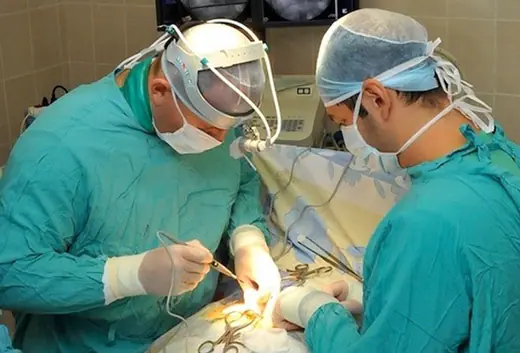
When the stitches stop hurting and heal a little, you can smear the scar after laparoscopy with Contractubex - this product is intended to soften scars. The drug normalizes the formation of new cells, is endowed with antibacterial properties, acts gently and smoothes the skin.
- Levosin is an inexpensive antibacterial, anti-inflammatory ointment, applied externally. Acts as an anesthetic, antibacterial, regenerating agent. The ointment is applied to a gauze bandage and then applied to the previously treated wound with 3% hydrogen peroxide.
- Mederma is a medicine in the form of a gel, with its help you can remove scars for up to one year. Old damage needs to be removed with hardware cosmetic devices and a laser. Thanks to the composition, the skin softens and becomes smooth under the influence of the gel. It can be used to smear scars, apply to the face, neck, and joints. The gel makes stretch marks, scars, marks from wounds and burns less noticeable. This German drug is sold in pharmacies without a special prescription.
- Dermatix is a silicone-based gel product that moisturizes the skin, improves the appearance of scars, and softens and smoothes protruding scars. It also helps relieve discomfort in the wound area, reduce itching, and restore skin pigmentation. Dermatix is intended for the treatment of hypertrophic and keloid scars.
Prevention of scars
It is necessary to follow certain instructions after laparoscopy, which are prescribed by the attending physician, namely:
- Limit physical activity until the postoperative incisions heal completely (1.5-2 months).
- Minimize the contact of water on the wound to avoid infection. You should not shower for a week, or better yet, two weeks after surgery. For a month you cannot take a bath or visit a swimming pool, public ponds, saunas, or steam baths.
- Do not overheat or sunbathe without protective equipment. Ultraviolet rays have a negative effect on laparoscopy marks.
- You should not have sexual intercourse for several weeks.
- You need to eat right. It is worth excluding alcohol, carbonated drinks, and hard-to-digest foods from your diet.
If you follow all the doctor’s instructions, the risk of complications after laparoscopy remains minimal.
The scar after laparoscopy is almost invisible. This occurs because after laparoscopy, the integrity of the abdominal wall remains intact, leaving only a few unnoticeable scars. Laparoscopy is an operation in which not one large incision is made, but only 3 or 4 small holes are punctured, and the puncture size does not exceed one centimeter.
Caring for scars after laparoscopy
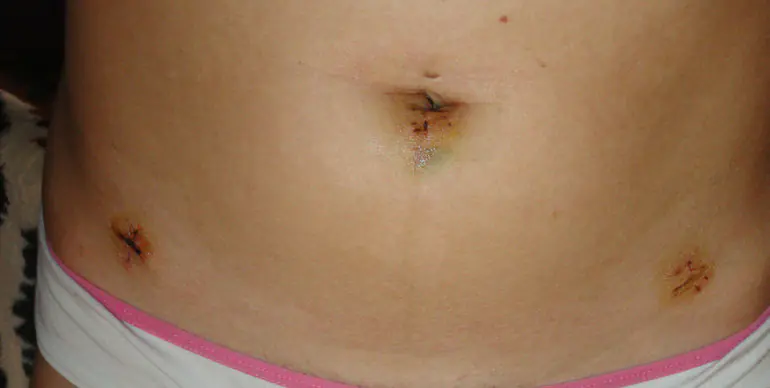
How the scar will look after surgery depends on the care of the sutures. Antiseptic drugs, such as iodine, are used to treat scars. Also, to prevent scarring, the following preventive procedures are carried out:
- A bandage with drugs that promote tissue healing is applied to the puncture site. The most commonly used gel is Curiosin. The main active ingredient of Curiosin is zinc hyaluronate. It has anti-inflammatory and bactericidal properties. A deficiency of this substance can lead to the appearance of keloid and hypertrophic scars.
- When skin wounds heal, Contractubex ointment is usually used to soften the scars and the skin around them. In addition, this ointment has an antiseptic effect.
It is quite possible to take care of the sutures on your own; upon discharge, the doctor will explain exactly how this should be done at home.
Important! The doctor's recommendations should be written down, not just listened to and forgotten.
The wound suddenly began to ooze, what should I do?
If the surgeon has not stitched the edges of the wound well enough, or they have separated, then the wound on the skin begins to ooze. If measures are not taken in time, then after healing, a very noticeable scar will remain on the skin. To avoid this, you need to treat the skin around the wound with an alcohol solution and the wound with hydrogen peroxide. After treatment, a bandage with syntomycin ointment is applied to the wound. Until the wound stops oozing, it should not be wetted.
Another postoperative complication is the formation of a ligature fistula. This is an inflammatory process at the site of wound suturing, which appears as a result of pathogenic bacteria getting on the ligature thread. A ligature thread is used to stitch the edges of a wound. If measures are not taken in time, this will lead to the development of an abscess.
A few days after the appearance of the ligature fistula, it opens and the contents come out. Over a long period of time, the fistula can open and close on its own, but surgical assistance is required to completely eliminate it.
More often, a long-healing fistula appears when the wound is sutured with silk threads. At the first symptoms of a fistula, you need to go for an examination either to a therapist or to your surgeon. Many patients do not know that if the fistula is not removed in time, it can lead to disability. There are cases when people lived with a fistula for five or even ten years, and then a large-scale inflammatory process began around the source, up to blood poisoning.
Important! Ligature fistula is a dangerous postoperative complication that can result in sepsis.
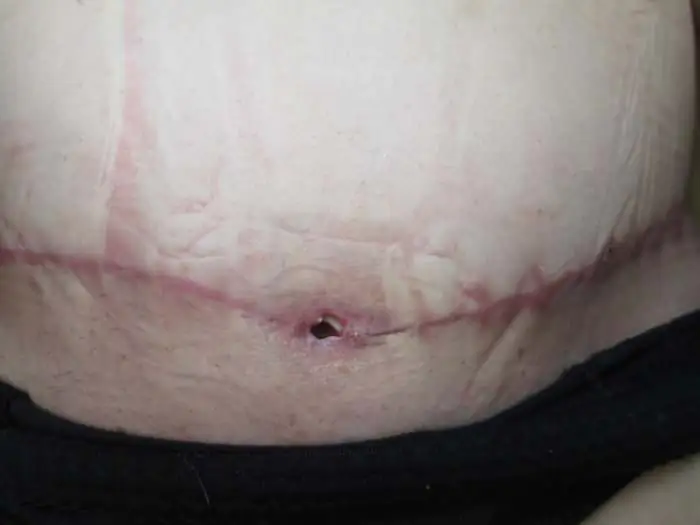
Laparoscopy of the gallbladder
This is a surgical operation to remove the gallbladder completely or remove stones from it. The operation is called laparoscopy of the gallbladder, since access to the organ is carried out using a special laparoscope apparatus.
During laparoscopy of the gallbladder, endotracheal anesthesia is used. Indications for laparoscopy of the gallbladder are diseases such as cholecystitis or polyps in the gallbladder.
Scars after laparoscopy of the gallbladder are almost invisible if healing proceeds without complications. The largest puncture when removing the gallbladder using laparoscopy is 10-15 mm.
Removing the gallbladder using laparoscopy has many contraindications, so you need to consult a doctor. The most common contraindications are diseases such as gallbladder abscess, intrahepatic location of the gallbladder and the presence of a tumor in the gallbladder.
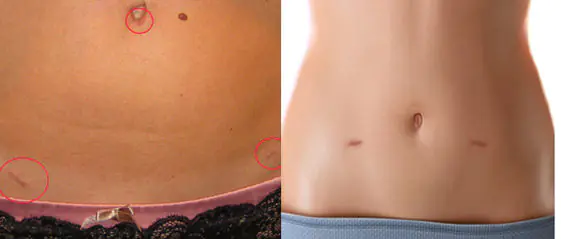
Scar after thyroid removal
Basically, surgery to remove the thyroid gland is performed on patients with cysts, malignant and benign tumors that make breathing difficult. There are several types of operations to remove the thyroid gland:
- removal of the entire gland completely;
- removal of a lobe of the thyroid gland;
- removal of part of the gland.
After surgery to remove the thyroid gland, a scar remains. The size and structure of the seam depends on several factors:
- what technique was used to make the incision on the thyroid gland;
- how the incision was sutured;
- How was the healing process?
- the patient's skin is prone to forming keloid scars;
- elasticity of tissues and the presence of collagen fibers in them;
No special rehabilitation measures are required after surgery to remove the thyroid gland.
The scar after a strumectomy (surgical removal of the entire thyroid gland or part of it) is located horizontally under the cartilage of the larynx. Its length ranges from 2 to 6 centimeters, depending on the volume of the operation. When the thyroid gland is removed openly, the scar is larger than with endoscopic surgery.
Large thyroid nodules put pressure on the trachea; to maintain breathing, a tracheostomy is installed, a curved tube through which a person breathes. In this case, the tracheostomy is inserted through an incision on the front surface of the neck, and such an intervention also leaves a scar.
Postoperative suture seroma, what is it?
After the operation, a complication such as seroma may occur. This is a process where serous fluid accumulates in a postoperative wound. Quite often, seroma does not require intervention and resolves on its own within two weeks. Typically, seroma makes itself felt on the 2nd or 3rd day after surgery. The discharge from the seroma is yellowish in color and mixed with blood. Seroma most often appears in overweight people.
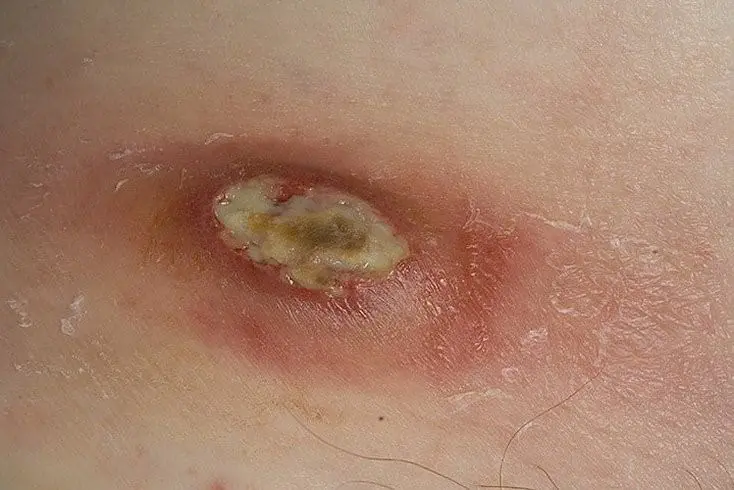
Seroma is treated using two methods:
The surgical method uses puncture. The liquid is pumped out using a syringe for 2-3 days. To completely get rid of it, you need to do from three to seven punctures.
For medicinal treatment, the following are used:
- broad-spectrum antibiotics;
- non-steroidal anti-inflammatory drugs;
- in some cases, steroidal anti-inflammatory drugs Kenagol or Diprospan.
The scar after seroma will be invisible only if its treatment is started immediately.
Laparoscopy in blepharoplasty
Blepharoplasty is an operation to correct the face, namely sagging eyelids and bags under the eyes. Depending on the structure of the eye and the method of operation, blepharoplasty can be of several types. Basically, blepharoplasty is divided into classical and laser. Although blepharoplasty is a fairly simple operation, the post-operative scar will not heal in 3 or 4 weeks, as patients expect.
Scar healing after blepharoplasty occurs in several stages. In the first month after blepharoplasty, postoperative scars go through the granulation phase, that is, a new layer of connective tissue forms in place of the scar. In another month, the scar will begin to turn into a neat, invisible scar, almost uniform with the surface of the facial skin. A special type of incision for blepharoplasty promotes the fastest healing if you follow all the surgeon’s recommendations. To make scars after blepharoplasty heal faster, you can use gels containing silicone. The face and scars after blepharoplasty do not look the best in the first few days due to swelling and hyperemia.
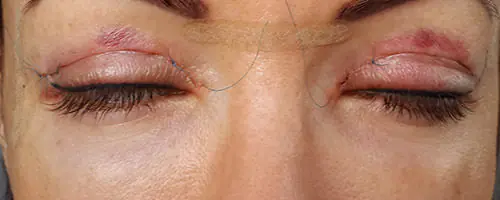
Scars after hirudotherapy
Hirudotherapy is the treatment of various diseases with the help of leeches. Leeches used in treatment are grown in special laboratories. That is, ordinary river leeches cannot be used for medical purposes. Leeches are divided into medicinal and pharmaceutical leeches. In contact with human skin, the leech acts on his internal tissues. You cannot use more than 15 leeches in one procedure.
The wound after hirudotherapy (treatment with leeches) has the shape of a pointed triangle. After the wound heals, a small scar remains, which completely disappears on the body in two or three weeks, and on the face in two or three days. There is no need to treat the wound itself, since the leech disinfects it itself.
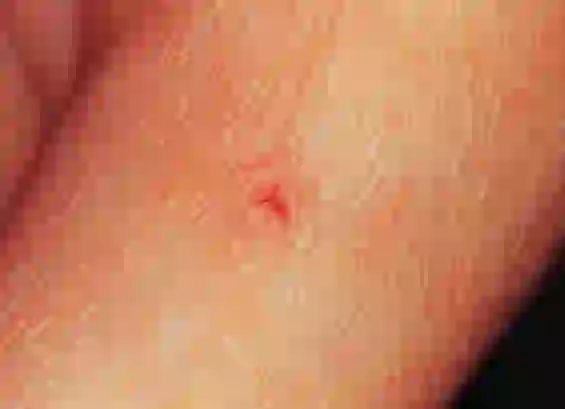
Lightning scars
A scar on the skin after a lightning strike is also a common occurrence. A lightning scar is often shaped like a tree. The places on the body where lightning entered and exited resemble strikes with a sharp object. Most often, lightning leaves scars on the back and neck, rarely on the face. The lightning scar was called the Lichtenberg figure.
A lightning strike scar is caused by heat and pressure. Getting struck by lightning is not only scary, but also dangerous. The consequences of a lightning strike are often fatal.
Scars after gunshot wounds
A wound received by a bullet is very dangerous to human life and health. It is very important, when removing a bullet, to check for bullet fragments. Bullets come in different sizes and shapes, which determines the shape and depth of the wound.
There are several types of bullet wounds:
- a through wound, when the bullet leaves the body without leaving any fragments in the wound area;
- a blind wound, when the bullet is in the human body, having the ability to move there;
- a tangential wound, when the bullet does not hit the body, but only damages the skin.
The scar from a bullet wound is usually oval or round in shape, no matter whether it is on the face or body. The entry wound initially has uneven contours, and then an irregularly rounded scar forms at the bullet entry site.
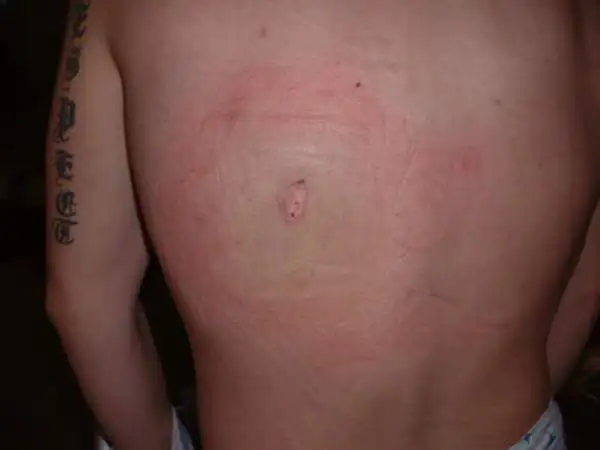
Scarring alopecia
Alopecia is characterized by loss of large volumes of hair. Scarring alopecia differs from regular baldness in that scars remain at the site of hair loss. Causes of alopecia:
- heredity;
- various types of infections, such as syphilis, tuberculosis, and so on;
- also, alopecia may appear at the site of the injury;
- Alopecia can appear as a symptom of more serious diseases such as lupus erythematosus or lichen.
The main symptom of alopecia is hair loss in a separate area of the skin, followed by an increase in the area of loss and the volume of lost hair. Cicatricial alopecia can be confused with lichen vulgaris. Only additional examinations can distinguish alopecia from other similar diseases. Unfortunately, it is impossible to restore hair growth in areas affected by alopecia, but it is possible to prevent the spread of scars.
If you find an error, please highlight a piece of text and click Ctrl+Enter.
We will be very grateful if you rate it and share it on social networks



